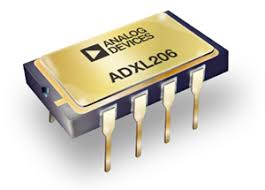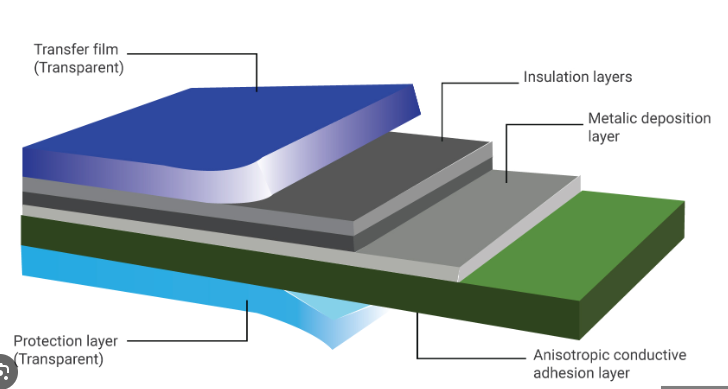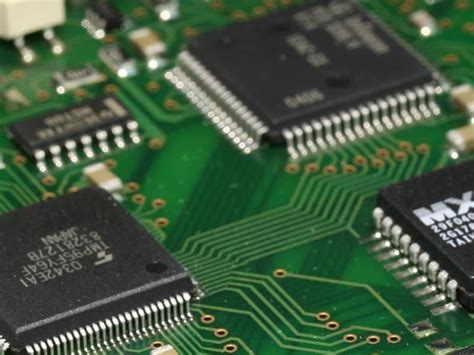The Relationship Between Printed Circuit Boards (PCBs) and Integrated Circuits (ICs)
Introduction
In the world of modern electronics, two fundamental components form the backbone of virtually all electronic devices: Printed Circuit Boards (PCBs) and Integrated Circuits (ICs). While these terms are often used interchangeably by those unfamiliar with electronics, they represent distinct but deeply interconnected elements of electronic system design. This article explores the intricate relationship between PCBs and ICs, examining their individual roles, how they interact, and why both are essential for creating functional electronic devices.
Understanding the Basic Concepts
What is a Printed Circuit Board (PCB)?
A Printed Circuit Board is a flat board made of insulating material (typically fiberglass) with conductive pathways etched or printed onto its surface. These pathways, called traces, connect various electronic components mounted on the board. PCBs provide both the physical structure to hold components in place and the electrical connections between them.
PCBs can be single-layer (with conductive traces on one side), double-layer (traces on both sides), or multi-layer (with traces on internal layers as well). They range from simple boards with just a few components to complex, high-density designs found in advanced computing equipment.
What is an Integrated Circuit (IC)?
An Integrated Circuit, commonly called a microchip or simply a chip, is a set of electronic circuits fabricated on a small flat piece (or “chip”) of semiconductor material, typically silicon. ICs can contain anywhere from a few to billions of transistors and other electronic components in a miniature package.
ICs come in various types including:
- Analog ICs (for processing continuous signals)
- Digital ICs (for processing discrete signals)
- Mixed-signal ICs (combining analog and digital)
- Microprocessors and microcontrollers
- Memory chips
- Application-Specific ICs (ASICs)
The Fundamental Relationship Between PCBs and ICs
Physical and Functional Interdependence
PCBs and ICs have a symbiotic relationship in electronic devices:
- Physical Support: The PCB provides the physical platform upon which ICs and other components are mounted. Without PCBs, ICs would have no stable foundation in most electronic devices.
- Electrical Connectivity: While ICs contain complex circuitry internally, they need to connect to other components in the system. PCBs provide these external connections through their trace networks.
- Power Distribution: PCBs distribute power from the device’s power supply to all ICs and other components that require electricity to function.
- Signal Routing: PCBs route signals between ICs and other components, enabling communication and data transfer within the electronic system.
Hierarchy of Complexity
We can view the relationship between PCBs and ICs as a hierarchy:
- Transistor Level: The fundamental building block of electronics
- IC Level: Thousands to billions of transistors integrated into a single package
- PCB Level: Multiple ICs and discrete components interconnected to form a complete system
This hierarchy demonstrates how PCBs operate at a higher level of system integration compared to ICs, which themselves represent an integration of more fundamental components.

How ICs Are Incorporated into PCBs
Mounting Technologies
There are several ways ICs are physically and electrically connected to PCBs:
- Through-Hole Technology (THT): ICs with leads that are inserted into holes drilled in the PCB and soldered on the opposite side. Common in older or high-reliability applications.
- Surface Mount Technology (SMT): ICs with small contact pads that are soldered directly onto the PCB surface. This is the dominant technology today, allowing for smaller, more densely packed boards.
- Ball Grid Array (BGA): ICs with an array of solder balls on their underside that connect to matching pads on the PCB. Used for high-pin-count chips like processors.
Electrical Connections
The electrical interface between ICs and PCBs involves:
- Signal Lines: Carry data and control signals between ICs
- Power Lines: Deliver required voltages to the IC
- Ground Connections: Provide reference potential and return paths
- Decoupling Capacitors: Placed near ICs on the PCB to stabilize power supply
Design Considerations for PCB-IC Integration
PCB Design Accommodating IC Requirements
PCB designers must consider numerous IC-related factors:
- Pinouts and Footprints: The PCB layout must match the IC’s physical pin arrangement and electrical requirements.
- Thermal Management: Many ICs generate significant heat that the PCB must help dissipate, often through thermal vias or heatsink attachments.
- Signal Integrity: High-speed ICs require careful PCB trace routing to prevent signal degradation.
- Power Delivery: The PCB must provide clean, stable power to all ICs with appropriate voltage regulation and decoupling.
- Electromagnetic Compatibility (EMC): PCB layout must minimize interference between ICs and prevent radiation.
IC Design Considering PCB Implementation
Similarly, IC designers must account for PCB realities:
- Package Selection: Choosing packages that are PCB-friendly in terms of size, pin count, and manufacturability.
- I/O Characteristics: Designing input/output circuits that work with typical PCB trace impedances and lengths.
- Testability: Including features that facilitate PCB-level testing and debugging.
Evolution of the PCB-IC Relationship
Historical Perspective
The relationship between PCBs and ICs has evolved significantly:
- Pre-IC Era: Early PCBs connected discrete transistors, resistors, and capacitors.
- Early IC Adoption: Small-scale ICs replaced some discrete components on PCBs.
- VLSI Era: Very Large Scale Integration led to fewer but more complex ICs on PCBs.
- Modern Systems: Today’s PCBs often host just a few highly integrated ICs plus necessary support components.
Current Trends
Recent developments continue to reshape the PCB-IC relationship:
- System-on-Chip (SoC): More functionality integrated into single ICs reduces PCB complexity.
- 3D Packaging: Technologies like Package-on-Package (PoP) and Through-Silicon Vias (TSVs) blur the line between PCBs and ICs.
- Embedded Components: Some passive components are being embedded within the PCB itself.
- Flexible Electronics: Flexible PCBs and stretchable ICs enable new form factors.

Special Cases and Advanced Technologies
System-in-Package (SiP) vs. PCB Assemblies
SiP technology integrates multiple ICs and sometimes passive components into a single package, performing functions that would traditionally require a small PCB. This represents an intermediate level of integration between discrete ICs and complete PCBs.
Chip-on-Board (COB) Technology
In COB designs, bare IC dies are mounted directly onto the PCB and wire-bonded to the board’s traces, then encapsulated. This eliminates the traditional IC package, saving space and sometimes improving performance.
Printed Electronics
Emerging technologies allow printing of both conductive traces and some active components directly onto substrates, potentially blurring the distinction between PCBs and ICs in future applications.
The Future of PCB-IC Integration
As electronics continue to advance, the relationship between PCBs and ICs will likely see several developments:
- Increased Integration: More functions will move from PCB interconnections into the ICs themselves.
- Heterogeneous Integration: Combining different types of ICs (logic, memory, analog) in advanced packages.
- Optical Interconnects: Potential shift from electrical to optical connections between ICs on PCBs.
- Additive Manufacturing: 3D printing technologies may enable new approaches to combining PCB and IC functions.
Conclusion
Printed Circuit Boards and Integrated Circuits, while distinct in their nature and function, are inseparable partners in modern electronics. PCBs provide the physical infrastructure and interconnection system that allows ICs to work together in complete electronic systems. ICs, in turn, provide the sophisticated functionality that makes modern electronics possible, but they require PCBs to connect to the world beyond their silicon boundaries.
Understanding the relationship between PCBs and ICs is fundamental to electronics design. As technology advances, the boundary between these two elements may continue to evolve, but their essential partnership will remain at the heart of electronic systems design and manufacturing. The interplay between increasing IC integration and PCB innovation drives progress in making electronics smaller, faster, more powerful, and more energy-efficient.
For engineers and electronics enthusiasts alike, appreciating how PCBs and ICs work together provides crucial insight into the inner workings of all the electronic devices that have become indispensable to modern life. From smartphones to spacecraft, this fundamental relationship enables the complex electronic systems that power our world.







